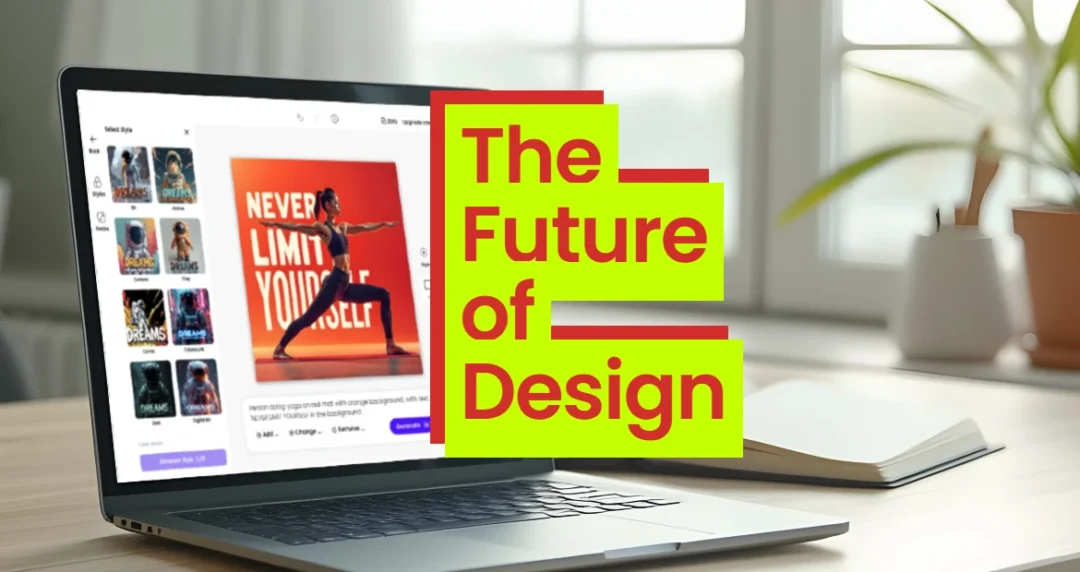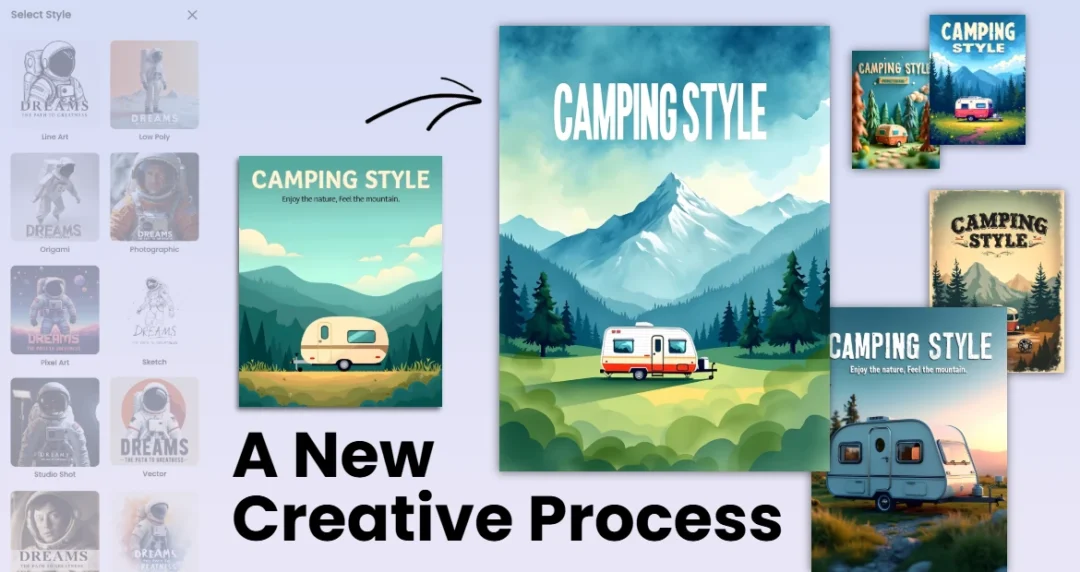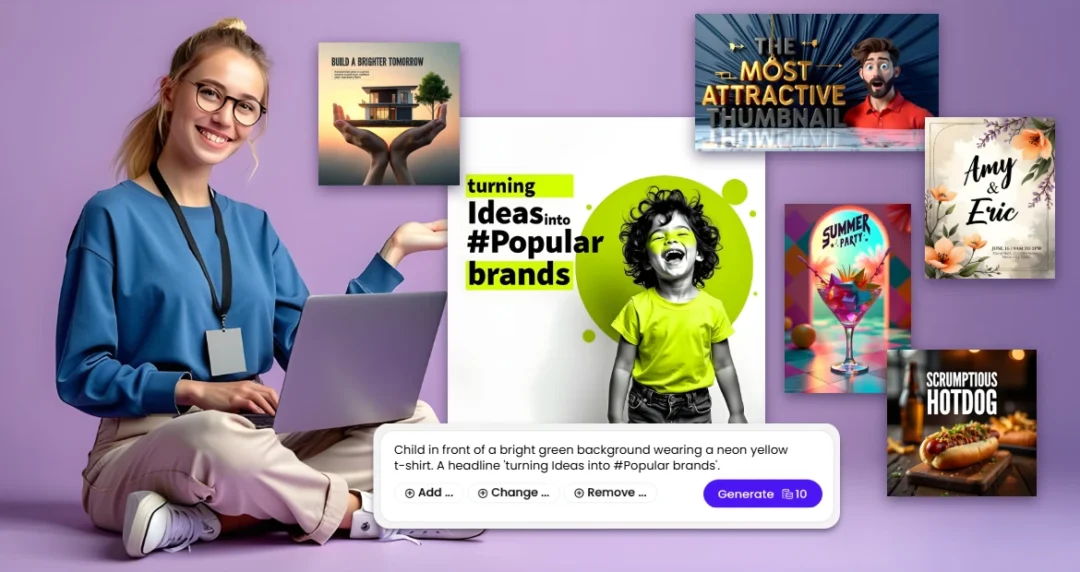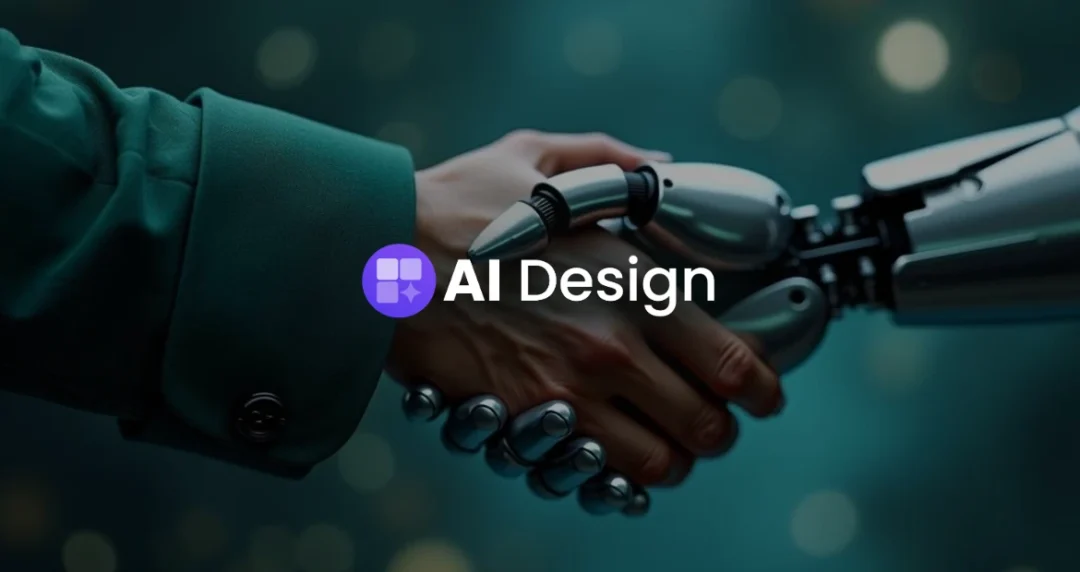
The creative process has always been a complex and multifaceted endeavor. From conceptualization to production, designers, artists, and creatives have traditionally relied on their skills, experience, and intuition to bring their ideas to life. But now, things are changing in a big way, thanks to Artificial Intelligence (AI). AI is like a super-smart helper that’s shaking up how we create things. It’s not just making work easier; it’s completely changing how we come up with and develop ideas. AI-powered design tools can do things like automatically create layouts or mimic a style, which means designers can spend more time on the fun, creative parts of their job.
In this article, we’re going to look at how AI is making waves in the design world. We’ll explore how designers can use these new AI tools to stay on top of their game and even push the boundaries of what’s possible. We’ll also check out some of the latest trends in design and see how AI is changing things for designers, marketers, and business owners.
As we dive into this topic, we’ll look at how AI is helping at every stage of the creative process, from the first spark of an idea to the finished product. We’ll also think about what this might mean for the future of design. How will AI change the way we work? What new possibilities will it open up? We’ll also talk about some of the tricky questions that come with using AI in design. Like, how do we make sure designs still have that human touch? And how can we use AI to solve real-world problems through design?
Whether you’re a designer who wants to stay ahead of the curve, a marketer looking for new ways to reach people, or a business owner hoping to stand out with great design, this article will give you a good look at how AI is changing the game.
The Rise of AI in the Design Industry
In recent years, the design industry has witnessed a remarkable transformation, thanks to the integration of Artificial Intelligence (AI). This technological revolution is reshaping how designers work, create, and innovate. At the forefront of this change is AI Design by Designs.ai, a groundbreaking tool that exemplifies the power of AI in creative processes. But it’s not just about one tool – the entire industry is feeling the impact of this technological revolution.
AI is fundamentally altering the creative landscape by enhancing traditional design methods with its ability to process vast amounts of data, recognize patterns, and generate ideas at unprecedented speeds. This shift is allowing designers to explore new realms of creativity and efficiency that were previously unimaginable. For instance, AI Design by Designs.ai can quickly generate layout options, color schemes, and even suggest appropriate typography with just a text prompt. This capability frees designers from time-consuming manual work, allowing them to focus on higher-level creative thinking, research, and strategy.
The collaborative potential of AI in design is also noteworthy. Rather than replacing human designers, AI tools are becoming powerful assistants. They can generate initial concepts and provide alternative ideas, creating a symbiotic relationship between human creativity and machine efficiency.
As AI continues to evolve, we’re seeing its application expand into various design disciplines. From graphic design to UI/UX, and even into areas like architecture and fashion, AI is opening up new possibilities. Tools like AI Design by Designs.ai are at the cutting edge of this trend, constantly expanding their capabilities to serve a wider range of design needs.
However, the rise of AI in design also brings challenges. Questions about creativity, originality, and the role of human intuition in an AI-assisted world are becoming increasingly relevant. Designers are grappling with how to maintain their unique style and vision while leveraging the power of AI tools. Despite these challenges, the future of AI in design looks promising. As tools like AI Design by Designs.ai continue to improve, we can expect even more seamless integration of AI into the design process. This could lead to new design paradigms, more efficient workflows, and the ability to tackle complex design challenges that were previously out of reach.

How AI is Changing the Creative Process
AI is changing the creative process in numerous ways, making it more efficient, effective, and innovative. One of the primary ways AI impacts the creative process is its ability to generate new ideas and inspiration. AI-powered design tools can analyze vast amounts of data and identify patterns and connections that humans might overlook. This AI-driven ideation doesn’t replace human creativity but stimulates it, offering unexpected combinations and fresh perspectives. This capability can be particularly useful for designers who are struggling with creative block or need to come up with innovative solutions to complex problems. By generating new ideas and inspiration, AI-powered design tools can help designers overcome creative hurdles and develop groundbreaking solutions.
One of the most significant changes AI brings to the creative process is the speed of prototyping. AI can generate multiple design variations in seconds, a task that would take hours or even days for human designers. This rapid prototyping allows for more experimentation and iteration, ultimately leading to better final designs. In design execution, AI is taking over many of the technical and repetitive aspects. It can automatically generate layouts, adjust color schemes, and even create custom illustrations based on text descriptions.
AI enables mass customization in design. Designers can create variations of a base design tailored to different user segments or even individual preferences. For example, the same poster with a mom and child can be changed within seconds to different ethnic races, allowing the poster to be more contextual to the target audience. There are also AI tools that can analyze user engagement and feedback on designs in real-time, suggesting improvements or alternatives, making the iteration process more efficient and data-driven.
Perhaps most importantly, AI is changing how designers learn and improve their craft. AI Design by Designs.ai doesn’t just produce designs; it is helping designers understand and explore new trends and try different color combinations. Above all, AI is making design more accessible to non-designers. Tools like AI Design by Designs.ai allow individuals with limited design experience to create professional-looking materials, democratizing the design process.

Design Trends and AI
As AI continues to evolve, it’s also influencing design trends. Personalization has become increasingly important, with tools like AI Design generating designs tailored to specific needs and preferences in just seconds. Minimalism is another key trend that AI is making easier to achieve, as these tools can automatically generate simple, elegant designs free from clutter and unnecessary elements.
Sustainability is a growing concern in design, and AI is helping to address this issue. AI Design tools can analyze the environmental impact of designs and suggest more sustainable alternatives. Accessibility is another critical aspect of design that AI is improving, with tools that can analyze designs and suggest improvements to make them more accessible to people with disabilities.
The Future of Design
Looking ahead, the future of design with AI promises even more innovation and creativity. We can expect to see increased automation of repetitive tasks, freeing up designers to focus on more creative and high-level work. This shift will likely lead to a greater emphasis on creativity, as designers will need to focus on developing innovative concepts and ideas that showcase their unique perspective and skills.
AI-powered tools will facilitate greater collaboration between designers, marketers, and entrepreneurs, leading to more effective teams and better outcomes. As environmental concerns grow, AI will play a crucial role in creating designs that minimize waste and reduce environmental impact.
Ethical Implications and Challenges
While the potential of AI in design is exciting, it also raises important ethical considerations. When AI generates designs, questions arise about ownership and copyright. There are concerns about potential job losses, particularly for more technical or repetitive design tasks. AI systems can inadvertently perpetuate or amplify biases present in their training data, raising issues of fairness and representation in design. There’s also a concern that AI-generated designs might lack the emotional depth and authenticity that human designers bring to their work. Transparency is another issue – should designs created with significant AI assistance be labeled as such?

Preparing for an AI-Driven Future in Design
As AI continues to reshape the design landscape, designers can prepare themselves by embracing AI as a tool and familiarizing themselves with AI-powered design tools. It’s crucial to focus on developing uniquely human skills that AI can’t easily replicate, such as creativity, empathy, and strategic thinking. Interdisciplinary learning, staying updated with the latest developments in AI and design, and developing an awareness of the ethical implications of AI in design will be key to navigating this new landscape.
The integration of AI into design is not just a passing trend but a fundamental shift in how we approach creativity and problem-solving in the visual world. From generating ideas to refining final products, AI is touching every aspect of the design process, offering new possibilities and challenges.
The future of design lies not in a competition between human and artificial intelligence, but in their synergy. By embracing AI as a collaborator and tool, designers can push the boundaries of creativity, tackle complex problems more effectively, and create more impactful, user-centered designs.
As we move forward, it will be crucial for designers, technologists, and business leaders to work together to shape the role of AI in design. By doing so, we can ensure that we harness the power of AI to enhance human creativity, rather than replace it, leading to a future where design is more innovative, accessible, and impactful than ever before.
The journey of AI in design is just beginning, and the possibilities are limitless. As designers, our role is to guide this evolution, ensuring that as our tools become more powerful, our designs become not just smarter, but more human-centered, ethical, and transformative. The future of design is here, and it’s powered by the fascinating interplay between human creativity and artificial intelligence.
